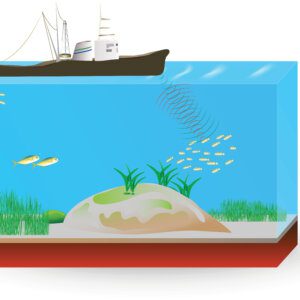In Part 1, we provided a basic introduction to Piezoelectric materials. In this blog, we will take a look at specific products that present a challenge for design engineers due to the need for increased output within smaller devices.
Mics and Speakers
Piezoelectric materials are used extensively in acoustics. Microphones contain piezoelectric crystals that convert the incoming sound waves into signals which are then processed to create outgoing amplified sound. Small speakers, such as those within cell phones and other mobile devices, are also driven by piezoelectric crystals. The device’s battery vibrates the crystal at a frequency that produces sound.
The challenge here is in designing piezoelectric transducers that are capable of producing very high quality sound within a small package, and without draining too much of the device’s battery.

Medical Devices
Non-invasive medical devices such as hearing aids also rely on piezoelectrics for a portion of their operation. So too does ultrasound technology, which is a major application of piezoelectric material. In ultrasonics, piezoelectric materials are electrified to create high frequency sound waves (between 1.5 and 8 MHz) which are able to penetrate bodily tissues. As the waves bounce back, piezoelectric crystals convert the received mechanical energy into electrical energy, sending it back to the ultrasound machine for conversion into an image.
Other medical devices such as harmonic scalpels utilize piezoelectric materials’ vibrational properties to cut and cauterize tissue during surgery. The piezoelectric crystals within the device generate both the kinetic energy and heat energy needed to simultaneously cut and cauterize.
Ultrasonic design challenges focus on the need to determine the correct shape and material composition of the piezoelectric components to create the very precise frequencies used in ultrasound. And, in the example of harmonic scalpels, the design must account for the effects of heating on the vibrational response of the device.

Perhaps the broadest and most long-standing use of piezoelectric technology can be found within sonar applications. During World War I, sonar was the first commercial application of piezoelectricity, and its use skyrocketed in the period between the two world wars.
Today, all sonar-based systems, including those used by the military, commercial fishermen, and in numerous other marine applications, utilize a piezo-containing transducer to both generate and receive sound waves. It seems simple, but designing transducers for the propagation of sound through water rather than air can present its own set of complex engineering challenges. These applications often require the piezoelectric device to generate high power signals to propagate long distances without attenuating below detectable levels.
New Uses
An emerging use of piezoelectric materials is within energy harvesting technology. Because of piezos’ unique properties, they can be successfully used in any application that requires or produces vibration. In energy harvesting, exogenous vibration produces a mechanical strain to the piezoelectric material which is converted to electrical energy. That piezo-created energy can then be used to power other components of the device or system. Battery-independent tire pressure monitoring systems (TPMS) are one such example. As a vehicle’s tires rotate, mechanical energy is produced. A piezo-containing sensor harvests that energy, stores it, and sends a signal to the driver’s display panel. TPMSes have historically been battery-powered, but increasing interest in environmentally-friendly battery alternatives has led to a new focus on the energy harvesting potential of piezoelectric materials.
Old Discovery, Modern Challenges
Although piezoelectric materials have been utilized for over a century, the current need for their application within smaller and more complex products presents a challenge for design engineers. Choosing the correct materials and designing the right crystal shape are critically important to the functionality of a prototype.
Piezos have very complex material properties that are highly intertwined, and material composition matters. Similarly, if the shape of a piezoelectric crystal doesn’t produce the correct resonant frequency, the device won’t work. And, in elegant lockstep with the “Observer Effect,” the very electrification of a piezoelectric crystal deforms its shape while also producing more electricity. It’s an incredibly complicated feedback loop that cries out for a design solution that eliminates the guesswork involved in lengthy build-test prototype processes.
Why Simulation Matters
Simulation is always helpful when dealing with non-linearities. It prevents designers from the thankless (and often budgetarily-unfeasible) task of building and testing amid too many unknowns. When considering electroacoustic transducers, the unique combination of electrical energy, mechanical energy and acoustics is decidedly non-linear, and inherently multiphysics in nature.
Multiphysics simulation can provide design engineers with the tools to develop products more effectively by enabling them to simulate their device designs within operating conditions. In addition, these simulations may include the entire ecosystem from control circuit to piezoelectric transducer to surrounding acoustic environment.
Multiphysics simulations will take into account factors such as:
- the constitutive equations of mechanical and electrical response
- poling direction of piezoelectric material properties
- boundary conditions
- structural mechanics/vibrational heating
As piezoelectric-dependent devices become smaller and more complex to meet the demands of sophisticated consumers (be those individuals or industries), design engineers must have tools that calculate the multiple physics within their products. Multiphysics simulation tools can provide clarity and direction to complicated design challenges.
Please contact us if you’re interested in learning more about our specific experience in designing Piezoelectric Acoustic Transducers as devices miniaturize.
